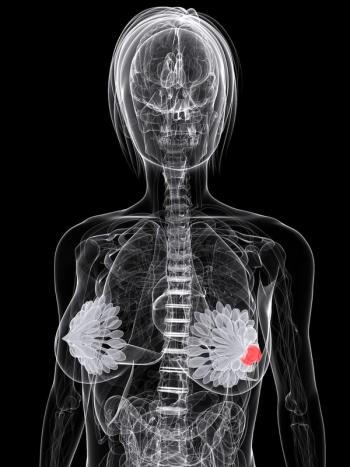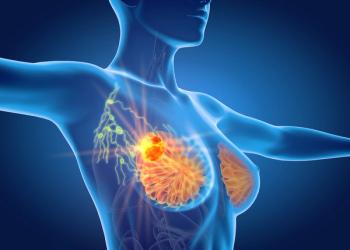
- ONCOLOGY Vol 14 No 6
- Volume 14
- Issue 6
Magnetic Resonance Imaging for Intra-abdominal Malignancy
Accurate imaging of the hepatic and extrahepatic abdomen is an important component of the management of many patients with cancer. Historically, clinicians have relied on computed tomography (CT). The use of intravenous (IV) and oral contrast
Accurate imaging of the hepatic and extrahepatic abdomen is an important component of the management of many patients with cancer. Historically, clinicians have relied on computed tomography (CT). The use of intravenous (IV) and oral contrast agents, coupled with dual-phase, helical CT scanning protocols, have made CT the workhorse at many institutions.
Recent advances in magnetic resonance imaging (MRI) have challenged this approach, however. The improved resolution of MRI, along with physician education and acceptance of this imaging modality, have added a new tool to the arsenal of treating physicians. Information provided in this supplement should assist readers in gaining a practical knowledge of MRI and an understanding of how this technology may influence the clinical management of patients with intra-abdominal malignancies.
Screening With MRI
The use of MRI as a screening modality in patients at high risk for developing primary liver cancer has not been thoroughly evaluated. Overall, the relatively low incidence of primary hepatic tumors in the United States makes routine hepatic screening impractical. However, because the incidence of hepatocellular carcinoma (HCC) is markedly elevated in patients with cirrhosis, hepatic screening may be of value in this setting. Moreover, a dramatic rise in the number of people in the United States infected with hepatitis C may result in an increased incidence of multinodular cirrhosis and subsequent HCC.
Magnetic resonance imaging of the extrahepatic abdomen has long been hampered by motion artifact and poor resolution. However, ultrafast image acquisition, the use of oral and IV contrast agents, and better computer software have markedly improved image quality. Using these techniques, pancreatic, biliary, renal, adrenal, peritoneal, gastrointestinal, and osseous imaging can be achieved. The quality of the resulting images may rival or even surpass those obtained with helical CT (see the article by
Current screening programs commonly rely on focused hepatic ultrasound and serial serum alpha-fetoprotein (AFP) levels to make a diagnosis. Unfortunately, ultrasound has a limited capability for differentiating HCC from regenerating nodules in the setting of multinodular cirrhosis, and AFP is often misleading. Thus, MRI may offer a reasonable screening alternative for this select group of patients, although further investigation is needed (see the article by
Goals of Imaging
Because the curative management of primary and metastatic hepatic tumors relies heavily on surgical resection and/or ablation, precise imaging of the liver is essential. Important imaging goals include tumor detection, tumor characterization, tumor distribution, and the anatomic relationship of tumor deposits to the hepatic vasculature.
The poor sensitivity of CT in detecting hepatic tumors less than 1 cm often left additional disease unidentified until the time of surgery, while the limited specificity of CT arterial portography frequently overestimated the extent of disease. Thus, changes in management were not uncommon at the time of surgery, including findings that rendered patients unresectable or nonablatable.
Fortunately, recent advances in MRI, such as ultrafast breath-hold techniques, liver-specific IV contrast agents, oral contrast agents, and multiplanar imaging, have markedly improved image resolution and lesion detection. Compared to CT, MRI appears to better identify and characterize hepatic tumors (see the article by
In addition, a relative cost advantage has been noted in patients with suspected hepatic tumors who were imaged with MRI, dispelling the misconception that MRI will increase the cost of care delivered in this group of patients (see the article by
Conclusions
The addition of MRI to the imaging modalities used in evaluating and managing cancer patients can improve diagnostic and therapeutic accuracy. Also, in the near future, identification and subsequent characterization of hepatic tumors should be improved by the next generation of liver-specific contrast agents soon to be approved (see article by
Articles in this issue
over 25 years ago
Purine Nucleoside Analogs in Indolent Non-Hodgkin’s Lymphomaover 25 years ago
3D CRT More Cost-Effective Than Conventional RT for Prostate CancerNewsletter
Stay up to date on recent advances in the multidisciplinary approach to cancer.
















































































